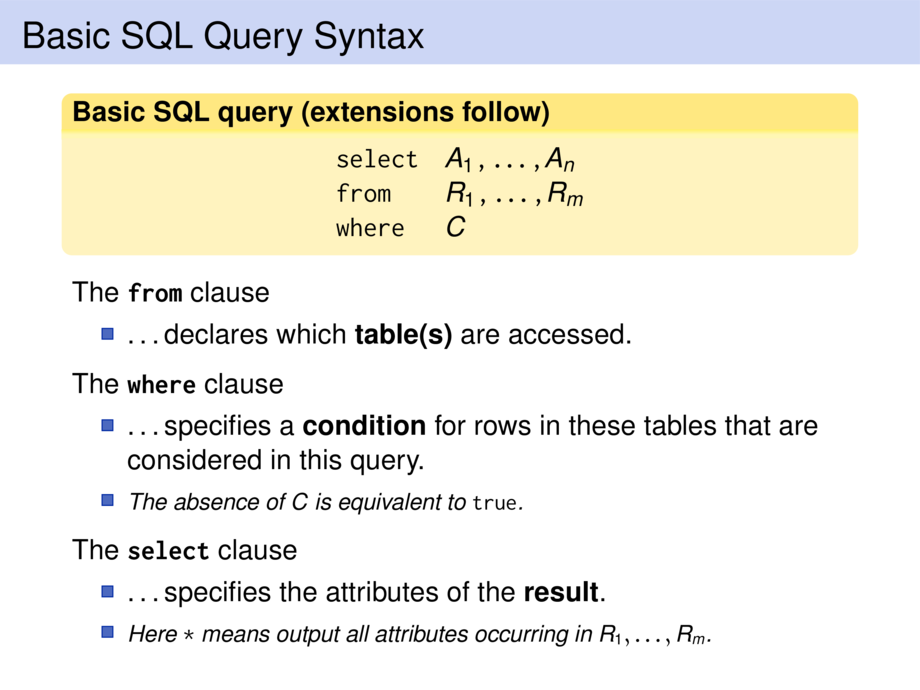



































































































5/224
\begin{frame}
\frametitle{Basic SQL Query Syntax}
\begin{code}{\textwidth}{Basic SQL query (extensions follow)}
\begin{tcenter}
$
\begin{array}{ll}
\sql{select} & A_1\sql, \dots\sql, A_n \\
\sql{from} & R_1\sql, \dots\sql, R_m \\
\sql{where} & C
\end{array}
$
\end{tcenter}
\end{code}
\ \\[1ex]
The \emph{\sql{from}} clause
\begin{itemize}
\item \ldots declares which \emph{table(s)} are accessed.
\end{itemize}
\smallskip
The \emph{\sql{where}} clause
\begin{itemize}
\item \ldots specifies a \emph{condition} for rows in these tables that are considered in this query.
\item \remark{The absence of $C$ is equivalent to $\sql{true}$.}
\end{itemize}
\smallskip
The \emph{\sql{select}} clause
\begin{itemize}
\item \ldots specifies the attributes of the \emph{result}.
\item \remark{Here \sql{*} means output all attributes occurring in $R_1, \dots, R_m$.}
\end{itemize}
\end{frame}

